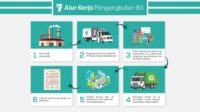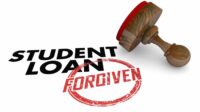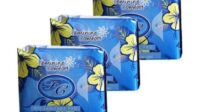How to start an independent caregiver business? It’s a question brimming with potential, offering a fulfilling career path and the chance to make a real difference in people’s lives. But navigating the legal landscape, building a client base, and managing the financial aspects requires careful planning and execution. This guide unravels the complexities, providing a step-by-step roadmap to successfully launch and grow your own independent caregiving business.
From understanding the diverse market demands for elderly care, childcare, and disability support to establishing a strong online presence and implementing effective marketing strategies, we’ll cover all the crucial elements. We’ll also delve into the legal and regulatory requirements, including licensing, insurance, and contract creation, ensuring you’re fully prepared to operate legally and ethically. Learn how to build a solid business foundation, acquire and manage clients efficiently, and consistently deliver excellent care while maintaining a healthy work-life balance.
Understanding the Independent Caregiver Market

The independent caregiver market presents a significant entrepreneurial opportunity, fueled by a growing elderly population and increasing demand for personalized care. Understanding the nuances of this market, including its geographic variations, service offerings, and business models, is crucial for success. This section will analyze the key aspects of the independent caregiver market to provide a comprehensive overview for aspiring entrepreneurs.
Geographic Demand for Independent Caregivers
Demand for independent caregivers varies considerably across geographical locations, primarily influenced by demographic factors such as population age, income levels, and the availability of alternative care options. Urban areas with large elderly populations, such as New York City, Los Angeles, and Chicago, generally exhibit higher demand than rural areas. Similarly, regions with higher concentrations of affluent seniors who can afford private care services experience greater demand. Conversely, areas with robust public healthcare systems or extensive family support networks may have lower demand for independent caregivers. These geographical variations necessitate a thorough market analysis before establishing an independent caregiving business.
Types of Caregiving Services Offered
Independent caregivers offer a diverse range of services tailored to the specific needs of their clients. These services broadly fall into three main categories: elderly care, childcare, and disability care. Elderly care encompasses assistance with activities of daily living (ADLs), such as bathing, dressing, and eating, as well as companionship and medication reminders. Childcare services range from babysitting and after-school care to more specialized care for children with special needs. Disability care involves providing support to individuals with physical, cognitive, or developmental disabilities, assisting with personal care, mobility, and communication. The specific services offered often depend on the caregiver’s qualifications, experience, and the client’s individual requirements.
Independent Caregivers vs. Agencies: A Business Model Comparison
Independent caregivers operate as sole proprietors or small businesses, directly contracting with clients to provide care services. This model offers greater flexibility and potentially higher profit margins, but requires the caregiver to handle all aspects of the business, including marketing, billing, and legal compliance. In contrast, caregiving agencies employ caregivers and act as intermediaries between clients and caregivers. Agencies handle administrative tasks, marketing, and insurance, providing caregivers with a steady stream of clients, but at the cost of a reduced share of the earnings. The choice between these models depends on individual preferences, skills, and risk tolerance. Independent caregivers benefit from autonomy and higher earning potential, while agencies offer stability and reduced administrative burden.
Challenges and Opportunities in the Independent Caregiver Market
The independent caregiver market presents both significant opportunities and challenges. Opportunities include the increasing demand for personalized care, the potential for high earning potential, and the flexibility of setting one’s own hours and work schedule. However, challenges include competition from larger agencies, the need to secure liability insurance, the administrative burden of managing a business, and the emotional and physical demands of caregiving. Furthermore, marketing oneself effectively and building a strong client base can be a considerable hurdle. Successfully navigating these challenges requires careful planning, effective marketing, and a strong commitment to providing high-quality care.
Legal and Regulatory Requirements
Starting an independent caregiver business requires navigating a complex legal landscape. Understanding and complying with all relevant regulations is crucial not only for avoiding penalties but also for building trust with clients and ensuring the safety and well-being of those you care for. Failure to do so can lead to significant legal and financial repercussions.
Licensing and Certification Requirements for Independent Caregivers
Licensing and certification requirements for independent caregivers vary significantly depending on location (state, province, or country). Some regions require specific licenses to operate as a caregiver, while others may only require registration or adherence to specific standards. These requirements often depend on the type of care provided (e.g., personal care, home health aide services, companionship). For example, in some US states, providing medical care requires specific medical licenses, while providing only companionship may not require any formal licensing. In contrast, some countries may have a more unified system with a single license covering various aspects of caregiving. It’s essential to research the specific regulations in your area by contacting your local health department, licensing board, or relevant government agency. Many state and provincial websites provide detailed information on licensing requirements for home healthcare providers.
Insurance and Liability Protection for Independent Caregivers
Comprehensive insurance and liability protection are paramount for independent caregivers. This protects both the caregiver and the client from potential financial losses arising from accidents, injuries, or negligence. General liability insurance covers claims of property damage or bodily injury caused by the caregiver’s actions or omissions. Professional liability insurance (also known as errors and omissions insurance) protects against claims of negligence or malpractice in the provision of care. Consider obtaining a bond, which protects clients against potential financial losses due to theft or embezzlement. The specific types and levels of insurance coverage needed will depend on the services provided and the specific risks involved. Consulting with an insurance broker specializing in caregiver insurance is highly recommended to determine the appropriate coverage.
Obtaining Necessary Permits and Licenses: A Step-by-Step Guide
1. Research Requirements: Identify all applicable licenses, permits, and registrations required in your jurisdiction. Consult your local health department, licensing board, and business registration office.
2. Complete Application: Obtain the necessary application forms and complete them accurately and thoroughly.
3. Gather Documentation: Compile all required supporting documents, such as proof of identity, background checks, and professional qualifications.
4. Submit Application: Submit the completed application and supporting documents to the appropriate authority.
5. Background Checks: Undergo any required background checks and fingerprinting.
6. Pay Fees: Pay all applicable fees associated with the application process.
7. Receive License: Upon approval, receive your license or permit. Remember that licenses may need renewal periodically.
Legal Aspects of Client Contracts and Agreements, How to start an independent caregiver business
A well-defined contract protects both the caregiver and the client. It Artikels the services provided, payment terms, responsibilities, and termination procedures. A clear contract minimizes misunderstandings and potential disputes. The contract should include details such as the caregiver’s qualifications, the scope of services, payment schedule, cancellation policy, confidentiality clause, and dispute resolution mechanism. It’s recommended to have a legal professional review the contract before using it.
Sample Client Contract Template
| Description | Details |
|---|---|
| Caregiver Name | [Caregiver’s Full Name] |
| Client Name | [Client’s Full Name] |
| Services Provided | [List of services, e.g., personal care, meal preparation, medication reminders] |
| Start Date | [Date] |
| Rate | $[Hourly Rate] per hour |
| Payment Terms | [Payment schedule, e.g., weekly, bi-weekly] |
| Termination Clause | [Notice period for termination by either party] |
| Confidentiality | [Statement regarding confidentiality of client information] |
| Dispute Resolution | [Method for resolving disputes, e.g., mediation, arbitration] |
Building Your Business Foundation
Launching a successful independent caregiving business requires meticulous planning and a solid foundation. This section Artikels the crucial steps in establishing your business, from developing a comprehensive business plan to securing the necessary supplies and equipment. Careful attention to these details will significantly impact your long-term success and sustainability.
Developing a Comprehensive Business Plan
A well-structured business plan is your roadmap to success. It should clearly define your target market (e.g., elderly individuals, individuals with disabilities, post-surgical patients), the specific caregiving services you offer (e.g., personal care, companionship, meal preparation, medication reminders), your pricing structure (hourly rate, package deals, etc.), and your marketing strategy. Consider including financial projections, outlining your startup costs, operating expenses, and projected revenue. A realistic business plan will help you secure funding, track your progress, and adapt to market changes. For example, a business plan might project a need for $5,000 in startup costs to cover insurance and marketing materials, with an hourly rate of $25 targeting a client base of 5 clients working 20 hours per week, generating a projected monthly income of $10,000.
Effective Marketing Strategies for Client Acquisition
Attracting clients requires a multi-faceted approach. An effective online presence is crucial. This includes a professional website showcasing your services, qualifications, and testimonials. Utilizing social media platforms like Facebook and Nextdoor to connect with potential clients within your local community is also essential. Networking with local healthcare professionals, hospitals, assisted living facilities, and senior centers can generate valuable referrals. Word-of-mouth marketing, fostered through excellent client care, is also incredibly powerful. Consider participating in local community events to raise awareness of your services. A successful strategy might involve combining a professional website with targeted Facebook ads and networking with local doctors’ offices.
Setting Up Your Business Finances
Establishing sound financial practices is vital for the long-term health of your business. This includes opening a separate business bank account to keep your personal and business finances separate. Develop a detailed budget that accounts for all expenses, including insurance, marketing, supplies, and vehicle costs. Implement a consistent accounting system, whether using simple spreadsheet software or professional accounting software. Regularly track your income and expenses to monitor your profitability and identify areas for improvement. Consider consulting with a financial advisor or accountant to ensure you are complying with all tax regulations and optimizing your financial strategy. For example, utilizing accounting software can automate invoice creation, expense tracking, and tax preparation, saving time and reducing errors.
Essential Supplies and Equipment
Having the right supplies and equipment is crucial for providing safe and effective care. The specific items will vary depending on the services offered, but some essentials include:
- Reliable transportation (car, insurance)
- First-aid kit with necessary supplies
- Personal protective equipment (PPE) such as gloves and masks
- Comfortable and appropriate clothing for caregiving
- Basic cleaning supplies
- Client records management system (paper or digital)
- Professional liability insurance
Client Acquisition and Management
Launching a successful independent caregiver business hinges on effectively acquiring and managing clients. This involves a multifaceted approach encompassing strategic marketing, strong communication, efficient administrative practices, and unwavering adherence to ethical standards. A well-defined strategy in each of these areas is crucial for sustainable growth and client satisfaction.
Client Acquisition Strategies
Securing your initial client base requires a proactive and multi-pronged approach. Simply relying on word-of-mouth, while valuable, is insufficient for consistent growth. A comprehensive strategy should incorporate several avenues to reach potential clients. These avenues can include online marketing, networking within the community, and leveraging referrals from existing clients and healthcare professionals.
- Online Presence: Create a professional website and utilize social media platforms (Facebook, Nextdoor) to showcase your services, qualifications, and testimonials. Consider online directories specifically for caregivers. Ensure your online profiles are regularly updated and reflect your current service offerings.
- Networking: Attend local community events, health fairs, and senior center gatherings. Build relationships with local healthcare professionals (doctors, nurses, social workers) who may refer clients to you. Participating in these events provides valuable networking opportunities and enhances your visibility within the community.
- Referral Programs: Implement a system to encourage referrals from existing clients. Offer incentives, such as discounts or gift cards, to clients who successfully refer new business. This leverages the power of positive word-of-mouth marketing and builds client loyalty.
Effective Communication Strategies
Building rapport with clients and their families is paramount. Open, honest, and empathetic communication fosters trust and ensures a positive caregiving experience. Active listening, clear articulation, and consistent updates are essential components of effective communication.
- Initial Consultation: The initial consultation should focus on understanding the client’s needs, preferences, and expectations. This involves active listening to thoroughly assess their physical, emotional, and cognitive requirements. Documenting this information is critical for providing personalized care.
- Regular Communication: Maintain consistent communication with clients and their families through regular updates, phone calls, and written reports. This proactive approach keeps everyone informed and addresses potential concerns promptly.
- Empathetic Approach: Demonstrate empathy and understanding towards the client’s and family’s emotional needs. Recognize that caregiving often involves emotional challenges, and a compassionate approach is crucial for building strong relationships.
Client Inquiry, Scheduling, and Billing
Efficiently managing client inquiries, scheduling appointments, and processing billing is crucial for smooth operations. Utilizing technology can significantly streamline these processes.
- Centralized System: Employ a centralized system (e.g., calendar software, client management software) to manage client inquiries, scheduling, and appointments. This system should allow for easy tracking of client information and appointments.
- Clear Billing Practices: Establish clear and transparent billing practices. Provide clients with a detailed breakdown of services and fees upfront. Offer various payment options (e.g., online payments, checks) for convenience.
- Prompt Responses: Respond to client inquiries promptly and professionally. A timely response demonstrates your commitment to providing excellent service and builds client trust.
Client Record Management and Confidentiality
Maintaining accurate and confidential client records is essential for providing quality care and complying with legal and ethical requirements. This includes adhering to HIPAA regulations (in applicable contexts) and maintaining secure storage of sensitive information.
- Secure Record Keeping: Use a secure system for storing client records, whether physical or electronic. This may involve password-protected files, encrypted data storage, or locked filing cabinets. Regularly back up electronic records to prevent data loss.
- HIPAA Compliance (where applicable): If you handle protected health information (PHI), ensure compliance with HIPAA regulations. This involves implementing appropriate security measures and adhering to strict confidentiality protocols.
- Record Retention Policy: Establish a clear record retention policy that Artikels how long client records are kept and how they are ultimately disposed of. This ensures compliance with legal and regulatory requirements.
Providing Excellent Caregiving Services
Providing exceptional caregiving involves a multifaceted approach encompassing safety, reliability, compassion, and continuous professional development. It requires a deep understanding of individual client needs, strong communication skills, and a commitment to maintaining the highest ethical standards. This section will explore best practices, common challenges, and strategies for ongoing professional growth in the field of independent caregiving.
Best Practices for Safe, Reliable, and Compassionate Care
Safe, reliable, and compassionate care is the cornerstone of a successful caregiving business. This involves meticulous attention to detail, proactive risk management, and a genuine empathy for the client’s emotional and physical well-being. Prioritizing client safety includes thorough assessments of the home environment to identify and mitigate potential hazards, such as loose rugs or inadequate lighting. Reliable care involves consistent adherence to schedules and maintaining open communication with clients and their families. Compassionate care extends beyond the provision of physical assistance; it encompasses active listening, emotional support, and respect for the client’s dignity and autonomy. For example, a caregiver might spend time engaging in meaningful conversations with a client, reminiscing about past experiences, or simply offering a comforting presence during moments of distress.
Common Challenges Faced by Caregivers and Their Solutions
Caregiving presents unique challenges, both personally and professionally. Caregiver burnout, for instance, is a significant concern, often stemming from the emotional toll of caring for individuals with complex needs. Strategies to mitigate burnout include setting healthy boundaries, prioritizing self-care, and seeking support from professional networks or supervisors. Another common challenge is managing difficult client behaviors. This requires patience, understanding, and the ability to de-escalate tense situations using appropriate communication techniques. Training in conflict resolution and de-escalation techniques can be invaluable in these scenarios. Finally, maintaining work-life balance can be difficult. Effective time management, clear scheduling, and the delegation of tasks when possible can help alleviate this pressure.
The Importance of Continuing Education and Professional Development
The healthcare landscape is constantly evolving, necessitating ongoing professional development for caregivers. Continuing education enhances skills, expands knowledge, and keeps caregivers abreast of the latest best practices and advancements in caregiving techniques. This can include participation in workshops, conferences, or online courses focused on specific areas like dementia care, medication management, or first aid and CPR. Staying current with industry regulations and legal requirements is also crucial for maintaining a compliant and ethical practice. Professional development opportunities not only improve the quality of care provided but also enhance the caregiver’s marketability and professional standing.
Essential Skills and Qualities for Successful Caregiving
The success of an independent caregiving business hinges on the caregiver’s ability to possess and effectively utilize a range of essential skills and qualities. These are crucial for building trust, providing high-quality care, and maintaining a thriving business.
- Compassion and Empathy: A genuine concern for the well-being of others is paramount.
- Patience and Understanding: The ability to remain calm and supportive in challenging situations.
- Strong Communication Skills: Effectively communicating with clients, families, and healthcare professionals.
- Physical Stamina and Dexterity: The ability to perform physically demanding tasks, such as lifting and transferring clients.
- Problem-Solving Skills: Adapting to unexpected situations and finding creative solutions.
- Organizational and Time Management Skills: Effectively managing schedules and tasks.
- Reliability and Punctuality: Consistently arriving on time and fulfilling commitments.
- Knowledge of First Aid and CPR: Essential for responding to medical emergencies.
- Understanding of Medication Management (where applicable): Safe and accurate administration of medications.
- Professionalism and Ethical Conduct: Maintaining confidentiality and adhering to ethical guidelines.
Managing Your Time and Finances
Successfully navigating the independent caregiver business requires a robust system for managing both time and finances. Effective time management ensures you provide quality care while maintaining a healthy work-life balance, preventing burnout. Simultaneously, a well-structured financial plan safeguards your business’s longevity and your personal well-being. This section Artikels strategies for achieving both.
Time Management Strategies for Independent Caregivers
Efficient time management is crucial for independent caregivers juggling multiple clients and personal commitments. A well-defined schedule minimizes wasted time and maximizes productivity. This involves creating a realistic daily or weekly schedule that accounts for travel time between clients, client care needs, administrative tasks, and personal time. Overestimating the time needed for tasks is a valuable strategy to avoid running late and creating stress.
Financial Tracking and Management for Independent Caregivers
Maintaining accurate financial records is paramount for tax purposes and business planning. This involves meticulous tracking of income and expenses, including mileage, supplies, and professional development costs. Utilizing accounting software, spreadsheets, or a dedicated bookkeeping service can streamline this process. Regularly reviewing financial statements provides insights into profitability and areas for improvement.
Billing Methods for Independent Caregivers
Several billing methods exist for independent caregivers, each with advantages and disadvantages. An hourly rate offers flexibility and is suitable for varied client needs. Per-visit billing simplifies administration but may not reflect the actual time spent with each client. Package deals provide clients with cost certainty and can incentivize long-term commitments, but require careful planning and pricing. The choice depends on individual business models and client preferences. For example, a caregiver specializing in short, frequent visits might prefer a per-visit model, while one offering extensive care might opt for an hourly rate or package deals.
Handling Unexpected Expenses and Financial Challenges
Unexpected expenses, such as medical emergencies or vehicle repairs, can significantly impact an independent caregiver’s finances. Establishing an emergency fund is crucial to cover such costs without disrupting business operations. Additionally, maintaining professional liability insurance protects against potential lawsuits. Exploring options like flexible spending accounts (FSAs) or health savings accounts (HSAs) can provide tax advantages and financial security. Proactive financial planning and contingency strategies mitigate the impact of unexpected events. For instance, setting aside a percentage of each month’s income into a dedicated savings account can provide a buffer against unexpected car repairs or medical bills. Having a well-defined financial plan helps navigate unexpected circumstances more effectively.
Building a Strong Online Presence

In today’s digital age, a robust online presence is no longer optional but essential for any successful independent caregiver business. Potential clients actively search online for caregivers, relying on websites and social media to find trustworthy and qualified professionals. A well-crafted online strategy can significantly increase your visibility, attract new clients, and build a strong reputation within your community. This section will Artikel key strategies for establishing a compelling online presence that drives business growth.
Professional Website Design
A professional website serves as your online storefront, providing potential clients with crucial information about your services and qualifications. The website should be user-friendly, visually appealing, and easily navigable on all devices. Key elements include a clear description of your services (e.g., companionship, personal care, medication reminders), your qualifications and experience (including certifications and licenses), a section for client testimonials, contact information, and a service area map. High-quality images showcasing a caring and professional environment can significantly enhance the overall impression. For instance, a photo of you interacting positively with a client (with their consent, of course, and adhering to privacy regulations) can build trust and rapport. Consider using a website builder like Wix or Squarespace for ease of use and affordability, or hiring a professional web designer for a more customized solution.
Social Media Engagement
Social media platforms like Facebook, Instagram, and even LinkedIn offer invaluable opportunities to connect with potential clients and build brand awareness. Regularly posting engaging content, such as informative articles about caregiving, client success stories (with consent), and behind-the-scenes glimpses of your work (again, respecting client privacy), can help humanize your business and build trust. Using relevant hashtags and participating in relevant online caregiver communities can significantly increase your reach. For example, a post sharing tips on preventing falls in elderly individuals can attract both potential clients and other caregivers for networking. Consistency is key; aim for regular updates to keep your audience engaged.
Online Reviews and Reputation Management
Online reviews significantly influence potential clients’ decisions. Positive reviews build trust and credibility, while negative reviews can severely damage your reputation. Actively encourage satisfied clients to leave reviews on platforms like Google My Business, Yelp, and Care.com. Respond to all reviews, both positive and negative, professionally and promptly. Addressing negative reviews constructively demonstrates your commitment to client satisfaction and can even turn a negative experience into a positive one. Monitoring your online reputation is crucial; use online reputation management tools to track your reviews and address any issues promptly.
Utilizing Online Tools and Resources
Several online tools and resources can support your independent caregiver business. Scheduling software can streamline appointment management, accounting software can simplify financial tracking, and project management tools can help organize your tasks and client information. Online marketing tools can assist with targeted advertising campaigns to reach specific demographics. For example, using Facebook Ads targeted at individuals searching for caregivers in your service area can be highly effective. Familiarize yourself with these tools and leverage them to enhance your efficiency and reach.
Continuous Improvement and Growth: How To Start An Independent Caregiver Business

Sustaining success as an independent caregiver requires a commitment to continuous improvement and strategic growth. This involves actively monitoring performance, seeking client feedback, and proactively planning for expansion. By implementing these strategies, you can build a thriving and reputable business that meets the evolving needs of your clients and the market.
Key Performance Indicators (KPIs) for Success
Tracking key performance indicators is crucial for understanding your business’s health and identifying areas for improvement. These metrics provide quantifiable data to inform decision-making and demonstrate progress. Relevant KPIs for independent caregivers might include client satisfaction scores (measured through surveys or feedback forms), client retention rate (percentage of clients who continue using your services), revenue growth (increase in earnings over time), number of new clients acquired per month, and operating expenses as a percentage of revenue. Analyzing these KPIs regularly allows you to pinpoint strengths and weaknesses, guiding strategic adjustments.
Strategies for Obtaining and Utilizing Client Feedback
Client feedback is invaluable for enhancing service quality and building stronger client relationships. Implement multiple methods for gathering feedback, such as post-service surveys, regular check-in calls, and informal conversations. Surveys can be brief, focusing on key aspects like satisfaction with care provided, communication effectiveness, and overall experience. Check-in calls offer a more personal approach, enabling you to address concerns directly and build rapport. Actively listen to feedback, both positive and negative, and use it to refine your processes and tailor your services to better meet individual needs. For example, if consistent feedback indicates a need for more flexibility in scheduling, adjust your availability accordingly.
Business Expansion and New Service Offerings
A well-defined plan for expansion is essential for long-term growth. This might involve increasing your client base by targeting new markets or demographics, expanding your service offerings to include specialized care (e.g., dementia care, post-surgical care), or hiring additional caregivers to handle a larger workload. Consider market research to identify unmet needs within your community and explore potential partnerships with healthcare providers or senior living facilities. Before introducing new services, ensure you have the necessary training, qualifications, and resources. For instance, if you decide to offer specialized dementia care, obtain relevant certifications and training to ensure you can provide safe and effective care.
Examples of Successful Independent Caregivers and Their Growth Strategies
Many independent caregivers have achieved remarkable success through strategic planning and dedication. One example is Sarah Miller, who started her business by focusing on providing personalized companionship care for seniors. By building strong relationships with her clients and consistently delivering high-quality service, she garnered positive word-of-mouth referrals, leading to rapid growth. She expanded her services to include light housekeeping and meal preparation, catering to the increasing demand for comprehensive care. Another example is David Lee, who initially focused on providing care for individuals recovering from surgery. Recognizing the growing need for post-hospital care, he developed specialized programs and built relationships with local hospitals, resulting in a steady stream of referrals and business growth. Both examples highlight the importance of identifying a niche market, providing exceptional service, and building strong relationships to achieve sustainable growth.






